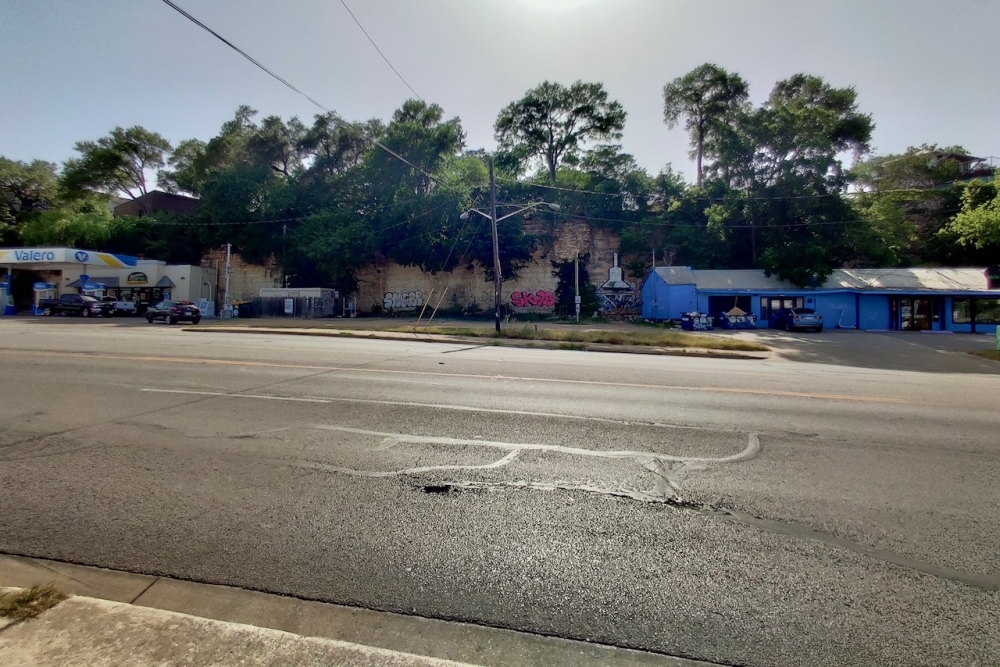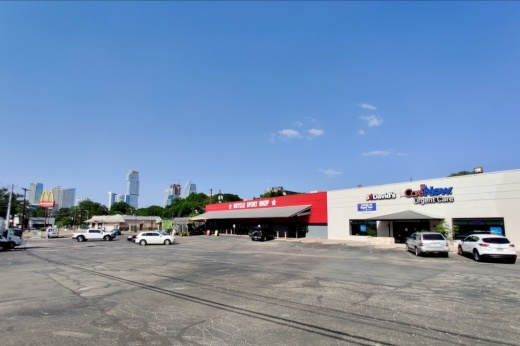City Council spent a portion of its June 14 work session discussing two planned unit development, or PUD, proposals from Endeavor. The real estate firm has been looking to redevelop the Austin American-Statesman property at 305 S. Congress Ave. for years, and recently detailed a separate project that could replace a bicycle shop and urgent care clinic on South Lamar Boulevard.
Endeavor is seeking PUD zoning on both sites given some complexities with the land and the firm's plans. That special designation can allow projects to push beyond local zoning standards if a development is found to be "superior" to one built under base zoning, and Endeavor is highlighting several community benefits linked to the projects to as a way to clear that bar.
Statesman PUD review ongoing
The Statesman PUD plan was approved on the first of three required readings before City Council in April, but the second and third readings needed to kick the project off are likely months away.
The 19-acre project is located in Austin's South Central Waterfront. Community members and planners have highlighted affordable housing and environmental and mobility improvements as top goals for that district, some of which could be wrapped into the Statesman project, according to current plans.
Endeavor's proposal includes several high-rises with a mix of residential, commercial and hotel space alongside revamped parkland, lakefront trails and streetscapes. However, details ranging from open space management to size of the new towers are still up for review.
Outside of the Statesman property, the broader district could also be covered by a new tax increment reinvestment zone, or TIRZ. Within such zones, cities can set aside a portion of tax collections for public improvements as local property values increase over time.
Austin already has a few TIRZs in the Seaholm District, Mueller and downtown. Council voted in favor of creating a South Central Waterfront TIRZ last year.
During the June discussion, Mayor Steve Adler said he wants to see further analysis of how increasing the towers' allowed height off Congress, potentially up to 600 feet, might boost the city's tax base in the area and fund more affordable housing through a future TIRZ.
Officials also requested a briefing on city financial considerations and time for public engagement before further action is taken.
"If we’re going to start talking about different heights—which may be appropriate here—this should not be a fly-by-the-night, 12 a.m. session that we have," Mayor Pro Tem Alison Alter said. "I think it rises to that level of importance for our city. And we should think about whether we need not only dedicated time in the work session, but a council meeting that is focused on that so the community can come speak to us in a clear way and that we can focus in on the changes.”
Aside from the housing benefit, Adler said more height would fit the character of the South Central Waterfront's future "as an extension of downtown."
While PUD items are on council's June 16 agenda, officials expect further discussion will be postponed to at least late July.
Hundreds of residences proposed on Lamar
Around 1 mile west, Endeavor is planning to build up to 400 housing units and 10,000 square feet of retail and restaurant space at 517 S. Lamar Blvd.
The nine-story, 433,000-square-foot Bike PUD project would reserve at least 10% of its housing for tenants earning below 60% of the regional median family income—now $110,300 for a family of four. The site is smaller than the Statesman property at 1.87 acres.
In addition to affordable housing, Endeavor representatives said streetscape and drainage improvements, buried utility lines, underground parking and reduced impervious cover could be among the "superior" items provided by a PUD.
Developers are also seeking to waive compatibility restrictions limiting height on the site to construct a 102-foot building. Compatibility limits in Austin are triggered by residential areas and designed to reduce the influence of new buildings on single-family homes.
Council's June review of the PUD proposal highlighted some of the quirks of Austin’s strict compatibility rules that City Council is seeking to tackle with its ongoing development code changes for busy city roadways. While the property is located right on the South Lamar corridor, where officials support bringing more dense housing, its allowed height is currently hampered by nearby properties with single-family zoning.
Despite its history as a social club rather than a home, The High Road on Dawson—located across a creek and railroad tracks to the east—still limits height on South Lamar given compatibility triggered by single-family zoning. And several homes across Lamar to the west would also cut down new construction at the site to as low as 40 feet—although staff said those residences, located on a bluff overlooking the corridor, would be situated above the development's roof.
“The homes triggering compatibility would in fact still be above the height of the proposed building, even at 102 feet," planner Jerry Rusthoven said. "We don’t see a need to necessarily protect homes from height when the homes are in fact higher than the building that we’re talking about.”
One change to compatibility rules backed by council this month would block homes on corridors such as Lamar from triggering height restrictions across the street. However, that change to development policy is not yet finalized.

While Endeavor is seeking the PUD label, the property's zoning would already allow construction through the city's vertical mixed-use, or VMU, affordable housing program. Council approved an expansion of the VMU on June 9, and building under a new designation of VMU2 would require more apartments at a lower affordability level than Endeavor planned for its PUD.
Even though Endeavor is pursuing a separate zoning designation, District 5 Council Member Ann Kitchen said she would like to see the affordability offering increased in light of the recent VMU change.
"I don’t want to pass what we just passed and then immediately not use it ... for taller buildings," Kitchen said.
The plan is opposed by the Zilker Neighborhood Association, which urged council to deny Endeavor's PUD request.





